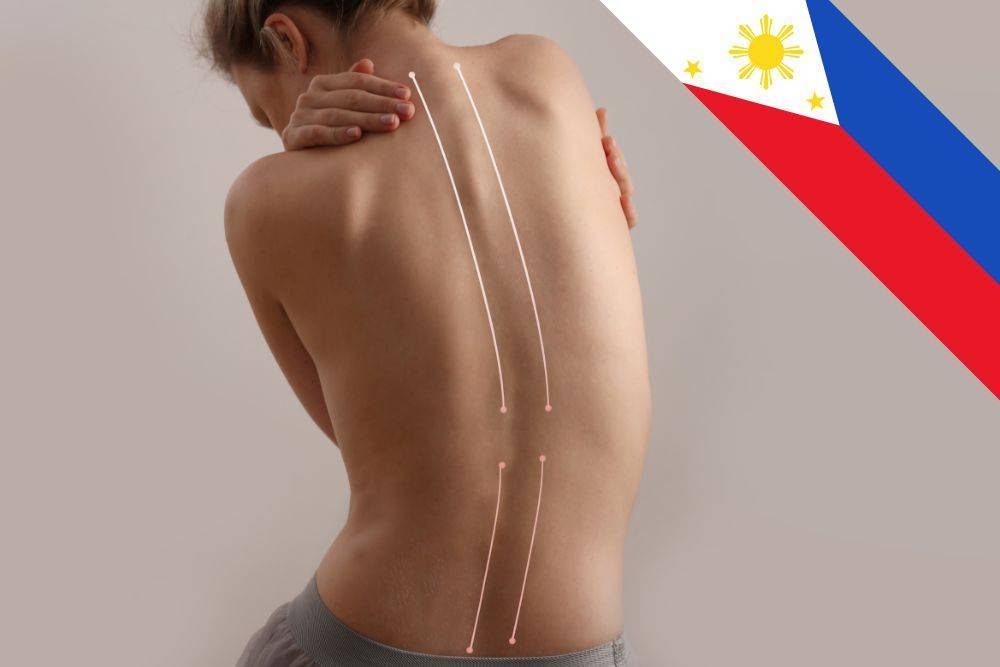A recent report from the Philippine Orthopedic Center highlighted that approximately 3 million Filipinos are currently living with scoliosis.
This statistic underscores the condition’s widespread impact within the country. Globally, scoliosis affects between 0.93 percent and 12 percent of the population, indicating a significant public health concern.
Understanding Scoliosis
Scoliosis is a medical condition characterised by an abnormal lateral curvature of the spine. This deviation from the normal spine alignment can range from mild to severe and can lead to various health complications if left untreated. The curvature often manifests during the growth spurt just before puberty, although it can develop at any age.
Gender Disparities
Scoliosis affects both males and females, but studies have shown a higher prevalence among women. In the Philippines, the disparity is notable, with a larger proportion of females diagnosed with the condition compared to their male counterparts. The reasons behind this gender difference are not entirely understood, but hormonal factors and differences in skeletal growth patterns are believed to play a role.
Early Detection and Importance of Screening
Early detection of scoliosis is crucial for effective management and treatment. The Philippine Orthopedic Center emphasises the importance of regular screenings, especially for children and adolescents. During these formative years, the spine is still developing, and early intervention can prevent the progression of the curvature and reduce the risk of long-term complications.
Types and Causes of Scoliosis
Scoliosis can be classified into several types based on its cause. The most common type is idiopathic scoliosis, which has no known cause and accounts for about 80 percent of cases. Other types include congenital scoliosis, resulting from spinal deformities present at birth, and neuromuscular scoliosis, which is associated with neurological or muscular diseases such as cerebral palsy or muscular dystrophy.
Symptoms and Diagnosis
The symptoms of scoliosis can vary depending on the severity of the curvature. Common signs include uneven shoulders, an asymmetrical waist, and one hip higher than the other. In severe cases, scoliosis can cause back pain and respiratory issues due to the impact on the rib cage and lungs. Diagnosis typically involves a physical examination and imaging tests such as X-rays, which help determine the extent and location of the spinal curvature.
Treatment Options
Scoliosis treatment depends on the curve’s severity and the risk of progression. For mild cases, observation and regular monitoring may be sufficient. Bracing is often recommended in moderate cases to prevent further curvature during growth. Severe cases may require surgical intervention, such as spinal fusion, to correct the alignment and stabilise the spine.
Challenges in Accessing Care
Despite the availability of treatment options, many Filipinos with scoliosis face challenges in accessing care. Financial constraints, lack of awareness, and limited healthcare resources lead to diagnosis and treatment delays. Addressing these barriers is essential to improve outcomes for individuals with scoliosis in the Philippines.
Raising Awareness and Education
Increasing public awareness about scoliosis is a critical step in improving early detection and treatment. Educational campaigns can help inform parents, teachers, and healthcare providers about the signs and symptoms of scoliosis and the importance of regular screenings. Community outreach programs and partnerships with schools can also play a vital role in promoting scoliosis awareness.
Support and Advocacy
Support groups and advocacy organisations provide valuable resources and assistance to individuals with scoliosis and their families. These groups offer emotional support, share information about treatment options, and advocate for better healthcare policies and access to care. In the Philippines, initiatives by non-governmental organisations and patient advocacy groups have been instrumental in raising awareness and supporting those affected by scoliosis.
Future Direction
Advancements in medical research and technology also promise to improve the diagnosis and treatment of scoliosis. Innovations in imaging techniques, surgical methods, and non-invasive treatments continually evolve, offering new hope for individuals with scoliosis. Continued research and healthcare infrastructure investment is essential to ensure that these advancements benefit the Filipino population.
Conclusion
Scoliosis is a significant health concern in the Philippines, affecting millions of individuals and presenting various challenges for diagnosis and treatment. Therefore, early detection, increased awareness, and improved access to care are crucial for managing the condition and enhancing the quality of life for those affected. Additionally, collaborative efforts from healthcare providers, government agencies, and advocacy groups are needed to address the needs of Filipinos with the condition and ensure they receive the care and support they deserve.
Have a pressing question for a doctor? Medical Channel Asia has launched a community forum page where you can get questions answered by a medical specialist. Visit the community forum here.

